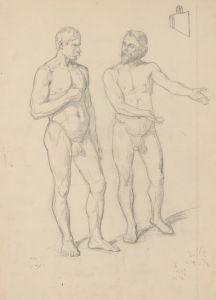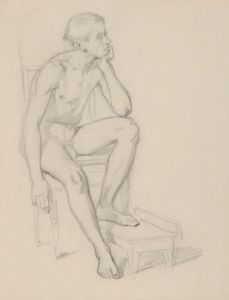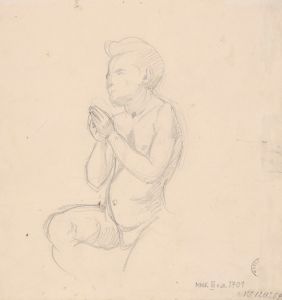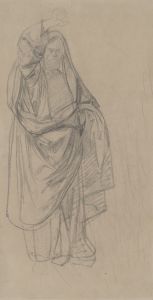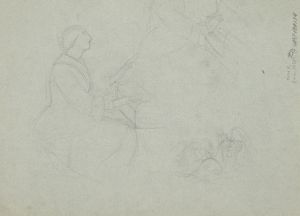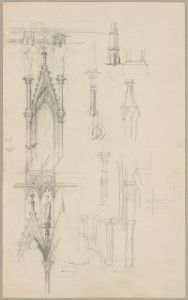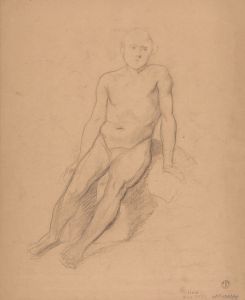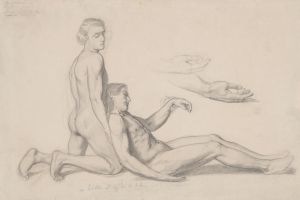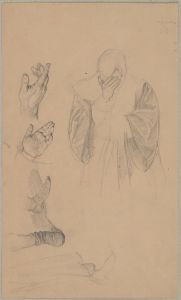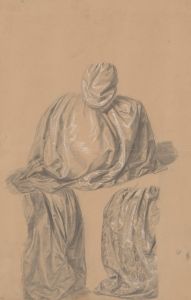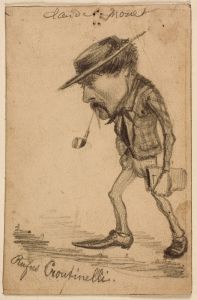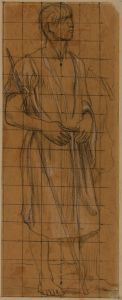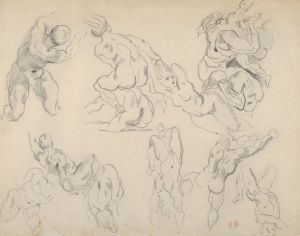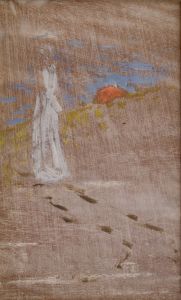
Sketch of two female figures to the painting ‘Martyrdom of St. Josaphat Kuntsevych’
A hand-painted replica of Józef Simmler’s masterpiece Sketch of two female figures to the painting ‘Martyrdom of St. Josaphat Kuntsevych’, meticulously crafted by professional artists to capture the true essence of the original. Each piece is created with museum-quality canvas and rare mineral pigments, carefully painted by experienced artists with delicate brushstrokes and rich, layered colors to perfectly recreate the texture of the original artwork. Unlike machine-printed reproductions, this hand-painted version brings the painting to life, infused with the artist’s emotions and skill in every stroke. Whether for personal collection or home decoration, it instantly elevates the artistic atmosphere of any space.
Józef Simmler, a prominent Polish painter of the 19th century, is known for his historical and religious works, often characterized by their detailed execution and emotional depth. Among his preparatory works is the "Sketch of two female figures to the painting ‘Martyrdom of St. Josaphat Kuntsevych’." This sketch serves as a study for Simmler’s larger composition depicting the martyrdom of St. Josaphat Kuntsevych, a significant figure in the history of the Eastern Catholic Church.
The sketch focuses on two female figures, likely intended to represent mourners or witnesses to the tragic event. Simmler’s attention to human emotion is evident in the expressive poses and gestures of the figures, which convey grief and solemnity. The artist’s use of light and shadow in the sketch demonstrates his skill in creating a sense of depth and drama, even in preparatory works. Such studies were a common practice for Simmler, allowing him to refine individual elements before incorporating them into the final painting.
St. Josaphat Kuntsevych (1580–1623) was a monk and archbishop of the Ruthenian Catholic Church, known for his efforts to promote unity between the Eastern Orthodox and Roman Catholic Churches. He was martyred in 1623, and his death became a symbol of religious conflict and reconciliation. Simmler’s painting of the martyrdom sought to capture the emotional and spiritual significance of this historical event, and the sketch of the two female figures likely played a role in shaping the overall composition.
While the final painting of the "Martyrdom of St. Josaphat Kuntsevych" is well-documented, less is known about the specific context or location of this particular sketch. It is presumed to have been created during Simmler’s preparatory process for the larger work, which was a common method among academic painters of his time. The sketch itself is valued for its artistic merit and as an insight into Simmler’s creative process.
Józef Simmler’s works, including his sketches, are significant contributions to Polish art history, reflecting the cultural and religious themes of his era. The "Sketch of two female figures to the painting ‘Martyrdom of St. Josaphat Kuntsevych’" exemplifies his dedication to capturing human emotion and his meticulous approach to composition.





